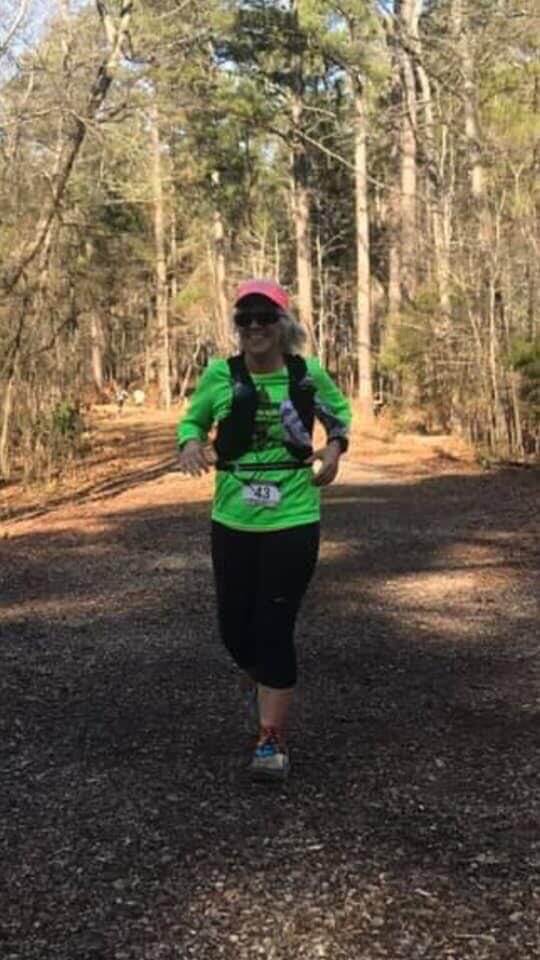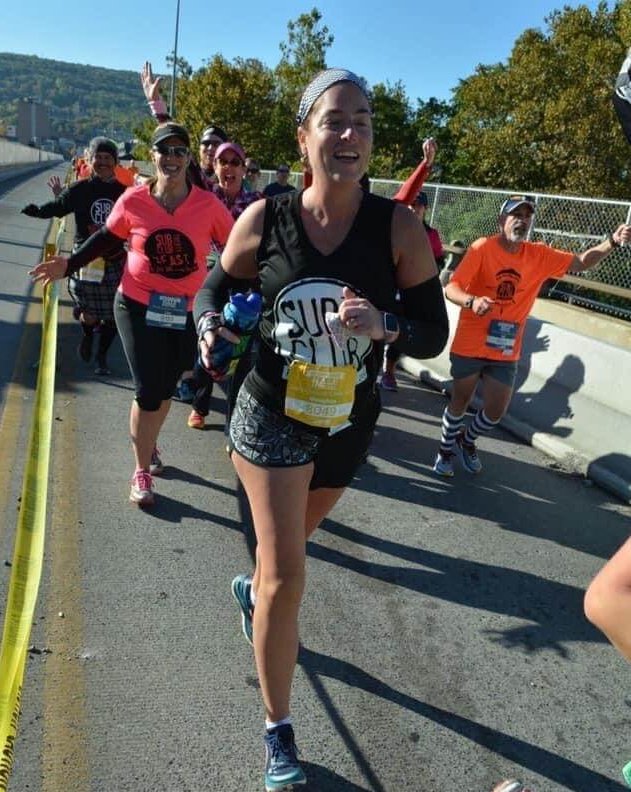The Maffetone Method: Everything You Need To Know

Are you a runner trying to speed up? The road to get faster is one many runners find themselves traveling down. There are many schools of thought on this. Just ask a group of runners how to speed up, and you will hear many, many different types of advice.
You may be surprised to hear one philosophy is to speed up; you need to slow down. Yes, you read that correctly. In the Maffetone method, you slow down to speed up.
Why Slow Down?

There are actually many reasons to slow down, and Dr. Phil Maffetone isn’t the only one who touts the benefits of this system. Also known as maf training, it is really catching on in running circles.
More Mileage
If you are slowing your roll, you will find you can complete more miles. However, it stands to reason if you are always running fast, or even if you mix up your pace and speeds, you can only increase mileage so fast, and you also may find yourself hitting the breaking point quickly.
However, according to Dr. Maffetone, if you slow down your pace considerably, you should also be able to run more miles each week. Many runners find that running more miles at an easy pace still equates to faster times on race day.
Casey Boye: I had recently moved, was recovered from major surgery, and hadn’t run in months and months. All of my running friends were an hour away, and it would have been easy just to give up that part of my life. Instead, I found a women’s running group where we followed one woman’s plan. We met twice each week. The first day was 3-4 miles. The second run was by time. We started out with 50 minutes, then 60, then 70, then 80. The next thing I knew, I had shaved 10 minutes off my half-marathon PR.
Lower Risk of Injury
In theory, running your miles slowly also decreases your risk of injury. However, racing, speed work, and fartleks increase your risk of injury. On the flip side, easy running makes you less susceptible to pulling a muscle or straining something.
Sure, eventually, you will probably put it to the test and push the pedal to the metal. Unless you never plan to race, you will find yourself at a starting line, fueled by adrenaline and the folks surrounding you. Most runners find that their speed has improved due to the easy running miles – and they did it without getting hurt.
The lower risk of injury hopefully keeps you running without interruption. We have all been there: a sprained ankle, a tweaked hamstring, a sore hip. When injuries sideline us, we lose ground. What if you can prevent that by easy running?

Kim Johnson, ultramarathoner, followed MAF for a year and did not get faster. However, she did increase her weekly mileage with far fewer aches and pains than she was used to. She also built endurance. She credits MAF with teaching her how to run at a truly aerobic pace, which has been key to her success as an ultra runner. Johnson added weekly spadework and hill training into her workouts to find the perfect balance. She is now an 80/20 runner, which she explains as running 80% of her workouts MAF style and the other 20% higher intensity work. This balance has led to success for her.
Burning More Body Fat
Slowing down when you run will help you to burn more body fat. How does that work? To effectively and efficiently burn fat, the body needs oxygen. To be sure you are getting enough oxygen, you need to be running slowly enough to be comfortable. Think: able to carry on a complete conversation.
If you are running in this perfect zone, your body gets good at using fat for energy. If you’re running just a little bit too fast, you are losing this opportunity. So if you slow down, your body will not only get better at burning fat but also find yourself getting faster.
Maximize Your Aerobic Capability
You want to build your aerobic capacity. Did you know that over 95% of the energy used for endurance sports comes from the aerobic system? To build a great aerobic base, you need to selectively and exclusively train your aerobic system. According to Dr. Maffetone, it takes three months dedicated to this practice to see maximum benefits.
How do you figure out when you are in the proper zone for building this base? It is not an exact science.
Many runners are familiar with zone training and the idea that you can subtract your age from 220 to find your maximum heart rate. However, Maffetone finds this equation to be flawed. He suggests the 180 plan.
The 180 Formula
First, you will need to find your maximum aerobic heart rate:
- Start with 180.
- Next, you subtract your age from 180 (180 – age).
- You aren’t done! Next, you need to change this number by selecting a category below. You pick the one that best matches your health profile:
Category A: If this is you, subtract an additional 10: If you have (or recently had) a major illness, recent operation, or are taking medication.
Category B: If this is you, subtract an additional 5: If you have never exercised, or if it has been a long time since you have exercised. Also, if you get multiple colds or cases of flu each year.
Category C: If you fit into category C, keep the number the same: You have regularly exercised four or more times weekly for up to two years without problems listed above.
Category D: If this is you, you can add 5 to your score: You have been competing for more than two years and have made improvements without getting hurt.
For example, if you are 30 years old and fit into category b:
180 – 30 = 150, then 150 – 5 = 145.

Meaghan Nana-Sinkam used MAF for three years straight, then intermittently since. Nana-Sinkam credits MAF/easy running/zone 2 running for two months to a recent half marathon PR where she improved roughly ten minutes on the same course.
Train in the Magic Zone
Using the example above, in Maf training, you will wear a heart rate monitor, and the goal is to keep your heart rate between 135-145. What will happen is you will find yourself able to run faster at this same heart rate.
As you’ve probably figured out, you can’t just pick a pace and slow down. To do this correctly, you need a heart rate monitor. Lucky for you, there are many reasonably priced smartwatches with heart rate monitors!
Downsides to the Maffetone Method?
Many people find the Maffetone method frustrating. Why? Because it isn’t easy to slow your roll. Also, runners have to shift their mindset. When you are forced to slow down, a 5-mile run may take considerably longer. Many runners prefer to head out for “time on feet” instead of specific mileage while doing Maf training.
Another issue is that running is a very social thing for some individuals, and when you switch to this type of training, you may lose running buddies.

Ingrid Sell-Boccelli says she did not find MAF to be a magic bullet after sticking to it religiously for nine months. She did improve but only to a point. She felt she was walking more than running. She doesn’t feel the 180 formula (as quoted above) is accurate and “has never seen anyone reconcile being older with a naturally high max HR,” and feels age needs to be considered with the other factors.
Does It Work?
The consensus is that yes, the Maffetone method works. True, the level of success varies from one runner to the next: but everyone has at least some success with it.
It certainly is worth a try! Especially since most runners complete their easy runs much too quickly. Slowing your roll might be just what your body needs.
Sources
Latest Articles
 Is Running on a Treadmill Easier Than Running Outside?Runners have their own preferences, whether it is treadmill running, running outside on the road, or exploring trails. So...
Is Running on a Treadmill Easier Than Running Outside?Runners have their own preferences, whether it is treadmill running, running outside on the road, or exploring trails. So... Is It OK to Use Trail Running Shoes on the Road?While trail running shoes can be used on roads, especially in situations where a runner encounters mixed terrains or pref...
Is It OK to Use Trail Running Shoes on the Road?While trail running shoes can be used on roads, especially in situations where a runner encounters mixed terrains or pref... How to Fix Sore Quads After Running?Rest, ice, gentle stretching, and over-the-counter pain relievers can help soothe sore quads after running. Also, ensure ...
How to Fix Sore Quads After Running?Rest, ice, gentle stretching, and over-the-counter pain relievers can help soothe sore quads after running. Also, ensure ... 10 Fruits With The Most Electrolytes to Replace Sports DrinksThese fruits are high in electrolytes such as potassium, magnesium, and calcium, essential for hydration, muscle function...
10 Fruits With The Most Electrolytes to Replace Sports DrinksThese fruits are high in electrolytes such as potassium, magnesium, and calcium, essential for hydration, muscle function...

